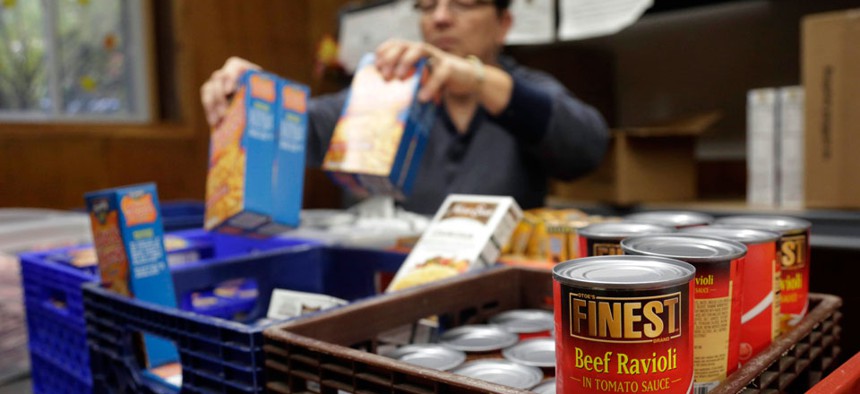How Data Analytics Can Help Root Out Food Stamp Fraud

M. Spencer Green/AP
Advanced data analytics can help the Agriculture Department detect fraud early -- and even stop it from happening.
John Cassara is an industry adviser for analytics firm SAS and a former special agent for the Treasury Department’s Financial Crimes Enforcement Network.
In late July, two men in North Texas were convicted for their participation in a fraud-based conspiracy that resulted in nearly $2 million in losses to the Supplemental Nutrition Assistance Program, more commonly known as SNAP.
As part of the scheme, the conspirators purchased food stamp benefits from the intended recipients in exchange for cash. The benefits were discounted by approximately 50 percent. The recipients could then use the cash to pay for any legal or illegal product or service -- outside the confines of the SNAP guidelines.
The above case came on the heels of one of the largest food stamp frauds in history. Dozens of suspects were involved in funneling approximately $18 million worth of food stamps through grocery and convenience stores throughout Georgia. As in the North Texas case, conspirators bought benefits from the intended beneficiaries for a fraction of their face value. The defendants then allegedly laundered the criminal proceeds received from the scheme.
Food Stamp Fraud on the Decline?
According to the Agriculture Department, which administers SNAP, approximately 46 million people receive benefits through the program. In fiscal year 2012, $86.5 billion was appropriated to the program. Additional billions were appropriated to the Women, Infant and Children benefit program. The growth of these programs has skyrocketed in recent years because of the Great Recession, continuing economic malaise, and the growth of entitlement programs in general.
Unfortunately, the issue of fraud and food stamps has become politically charged. However, all fair-minded people should agree the vast majority of people on SNAP need assistance. Conversely, we should also agree that fraud exists. And in a program as large as SNAP, we are talking about very large amounts of wasted taxpayer money.
According to USDA statistics, the “trafficking rate in SNAP has dropped dramatically” from about 4 cents on the dollar in 1993 to about 1.3 cents in 2011. Still, using USDA’s own numbers, SNAP fraud totals at least $1 billion of taxpayer money.
But how much fraud is truly involved? The exact number is impossible to determine because complete data doesn’t exist and the devil's in the details. For example, the USDA statistics only reflect fraud actually identified -- such as the trading of SNAP benefits for cash cases previously highlighted. In other words, officially, SNAP fraud is only what authorities catch.
Currently, there are no reliable estimates on the amount of fraud that goes unrecognized because the SNAP program relies primarily on self-enforcement. The SNAP client is supposed to notify USDA of changes in their status. Some do. Obviously, others commit fraud and continue to receive benefits. Periodic “recertification” processes are mostly a bureaucratic exercise. Most interviews are conducted over the phone and little documentation is required.
And, of course, the SNAP and WIC programs -- like all large government and private programs -- suffer from an unknown payment error rate because of internal missteps or bureaucratic incompetence.
USDA Turns to Analytics to Quell Fraud
Fortunately, USDA is committed to using the latest available technology to monitor and limit the abuse of SNAP.
Today’s powerful analytics enables a hybrid approach, which integrates knowledge of existing schemes, powerful predictive analysis capabilities, and modeling of relationships among entities in the benefits system to recognize fraud earlier in the process – and even stop it before it occurs. While each method is limited when used separately, together they present a formidable deterrent to fraud that can lead to the detection of these crime rings much, much sooner.
Through improved data integration, rules-based algorithms, anomaly detection, predictive modeling, and social network analysis, it is possible to identify the kinds of fraudsters and crime rings plaguing the USDA’s food stamp program.
The administration, Congress and USDA should agree to take politics out of the discussion and work to ensure benefits go to those who need them and, at the same time, protect the American taxpayer from fraud. With the amount of money involved, being satisfied with an artificially low fraud rate that only reflects what authorities catch is both misleading and a disservice to all.
Given the reality and priority of USDA enforcement, advanced robust analytics that focus on fraud detection and prevention is well worth the investment.






